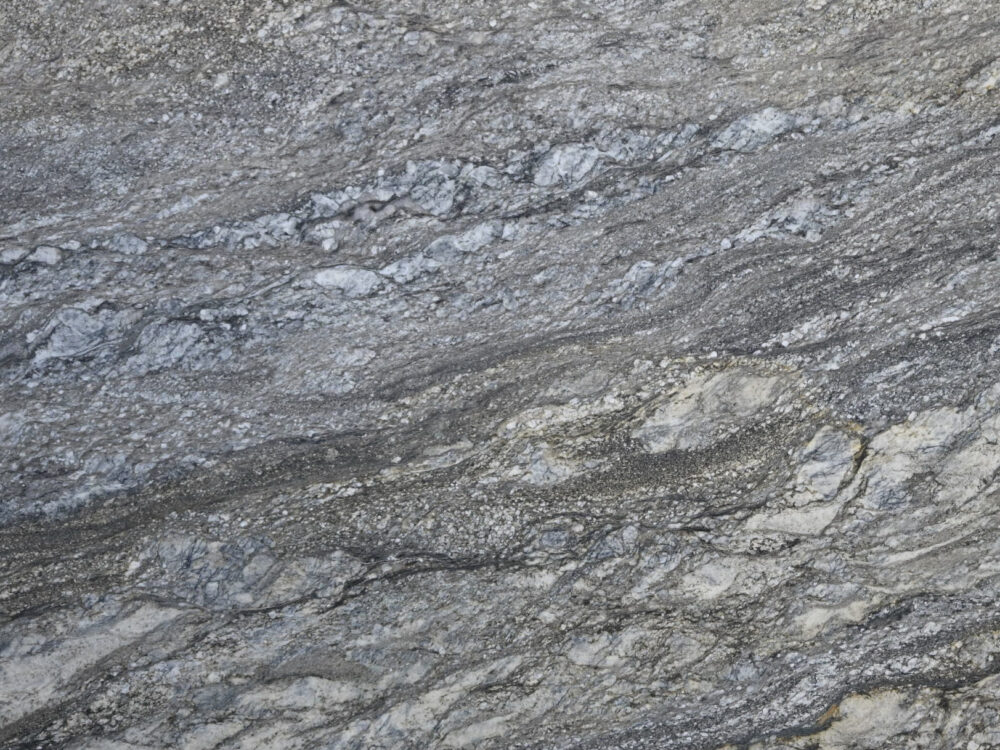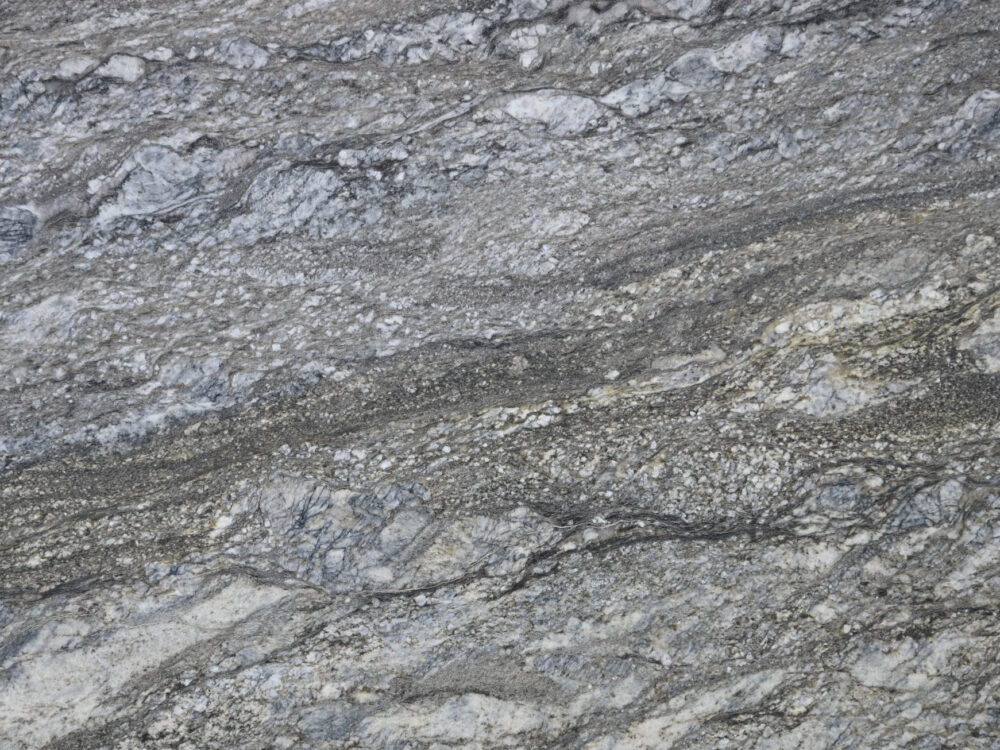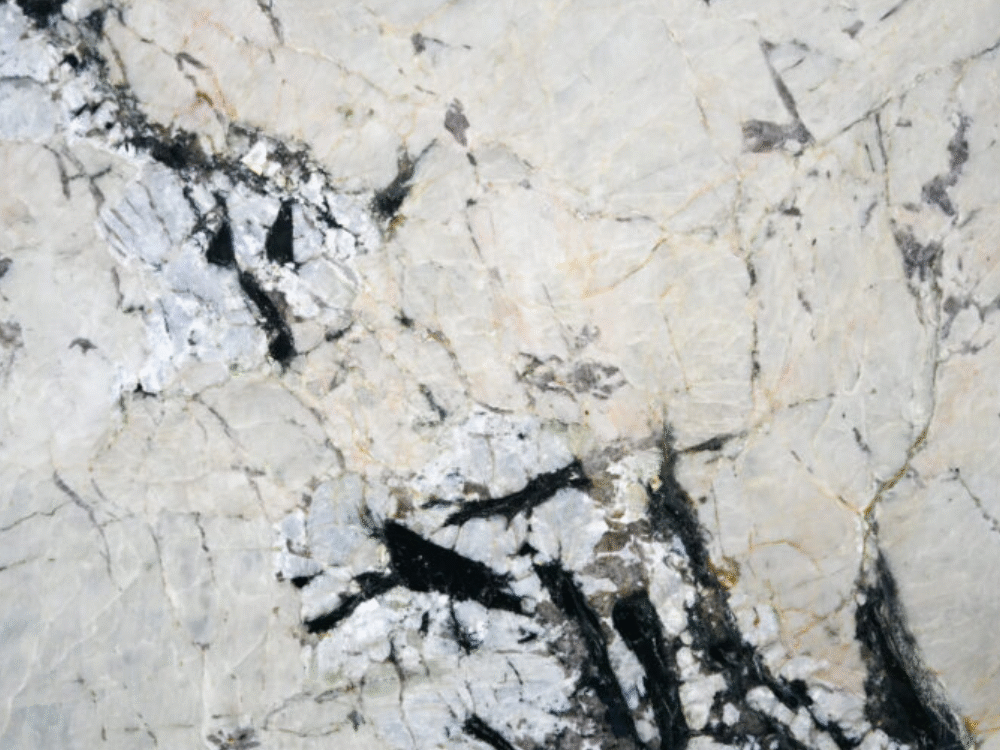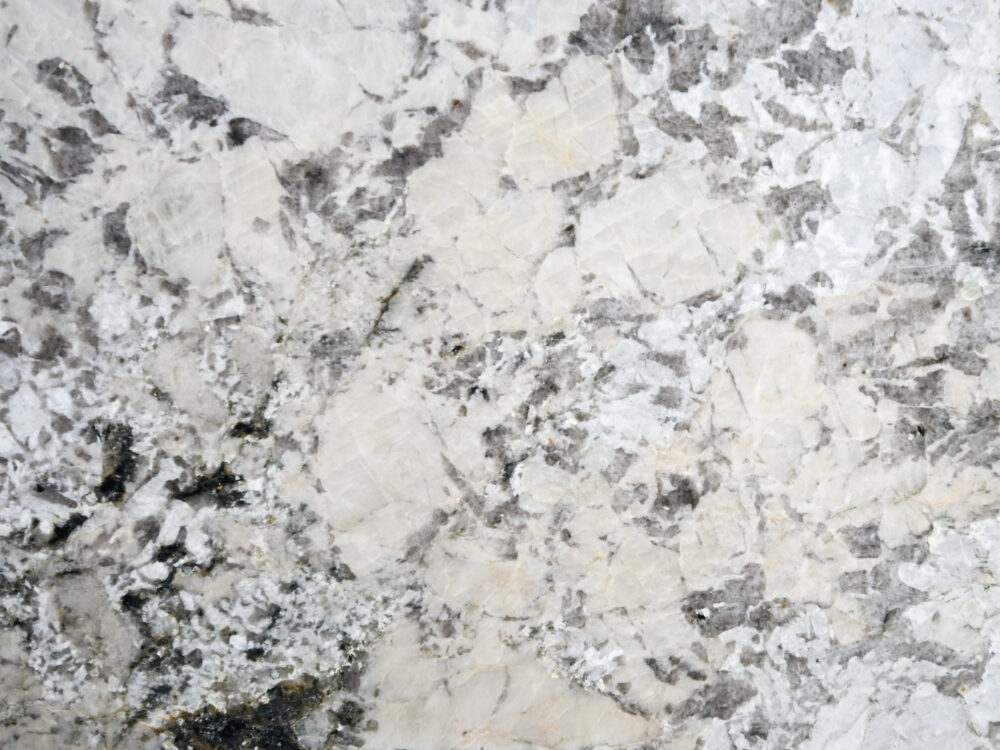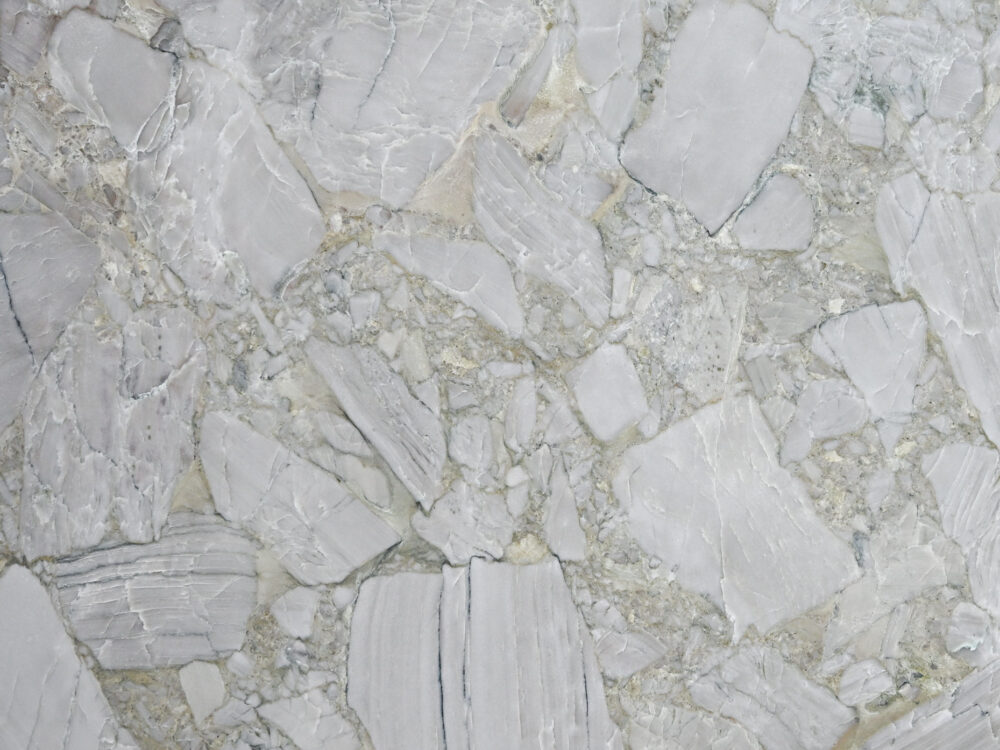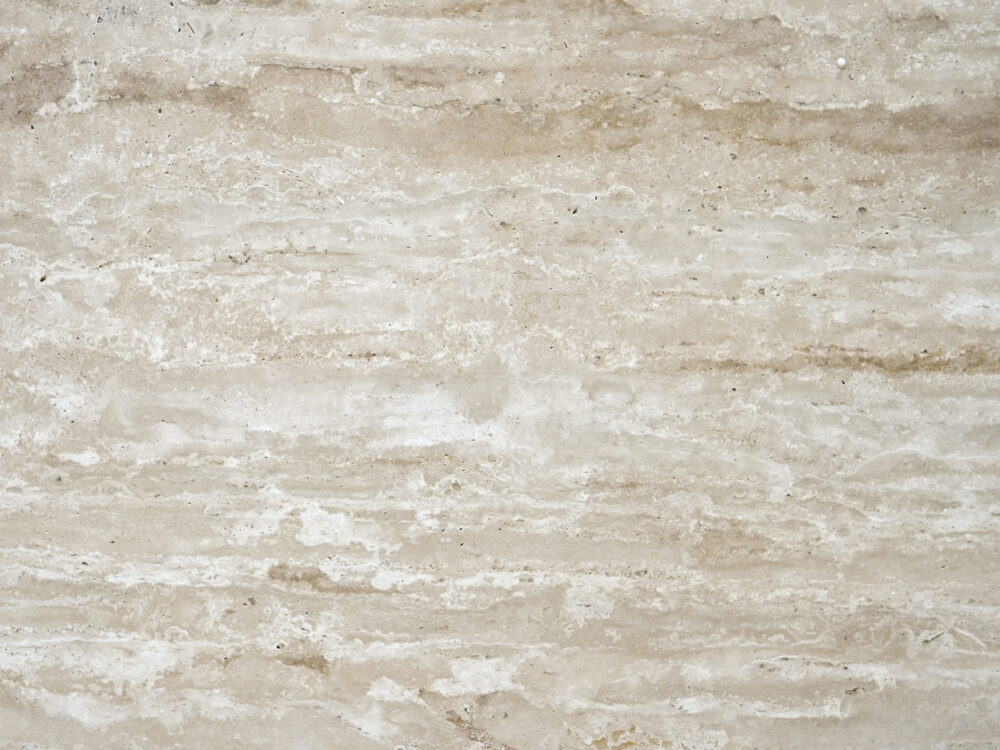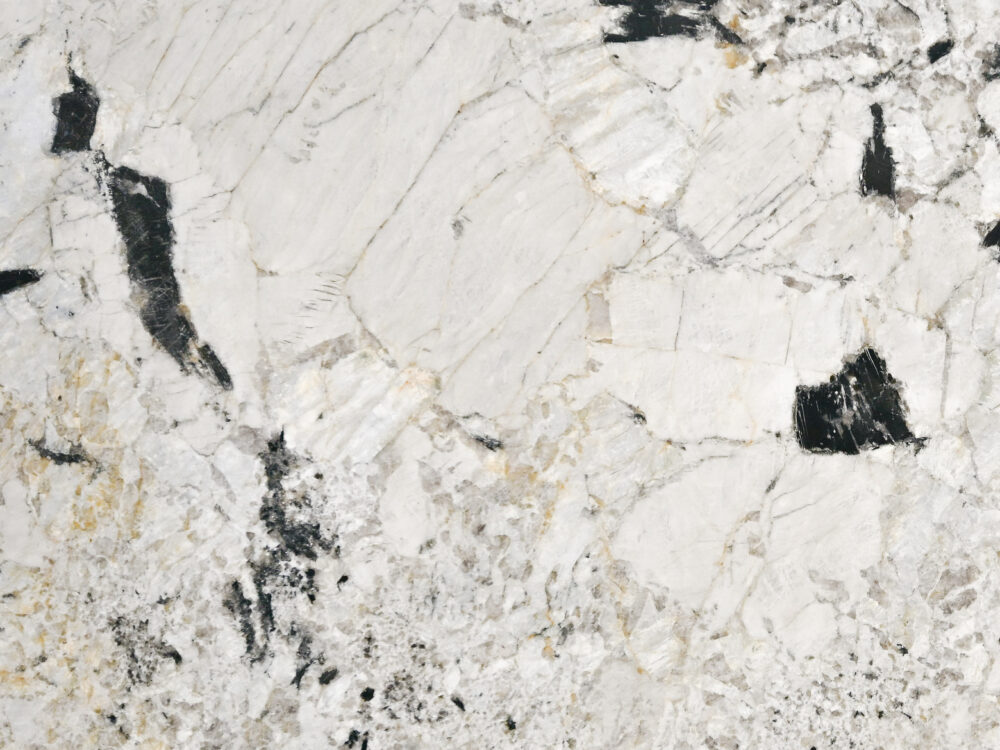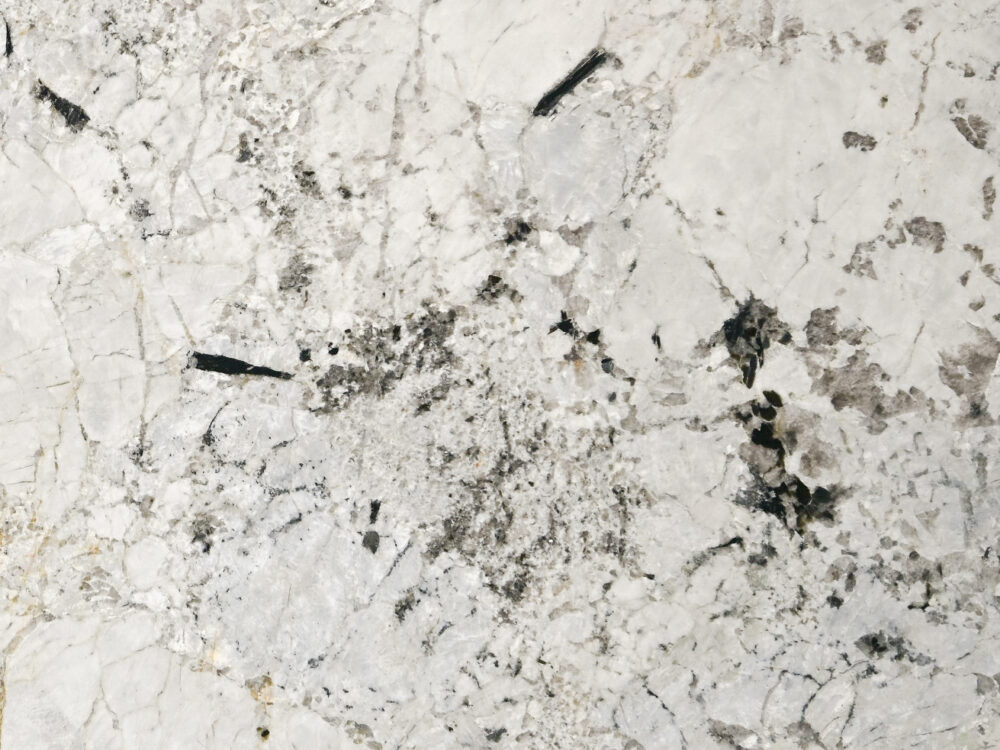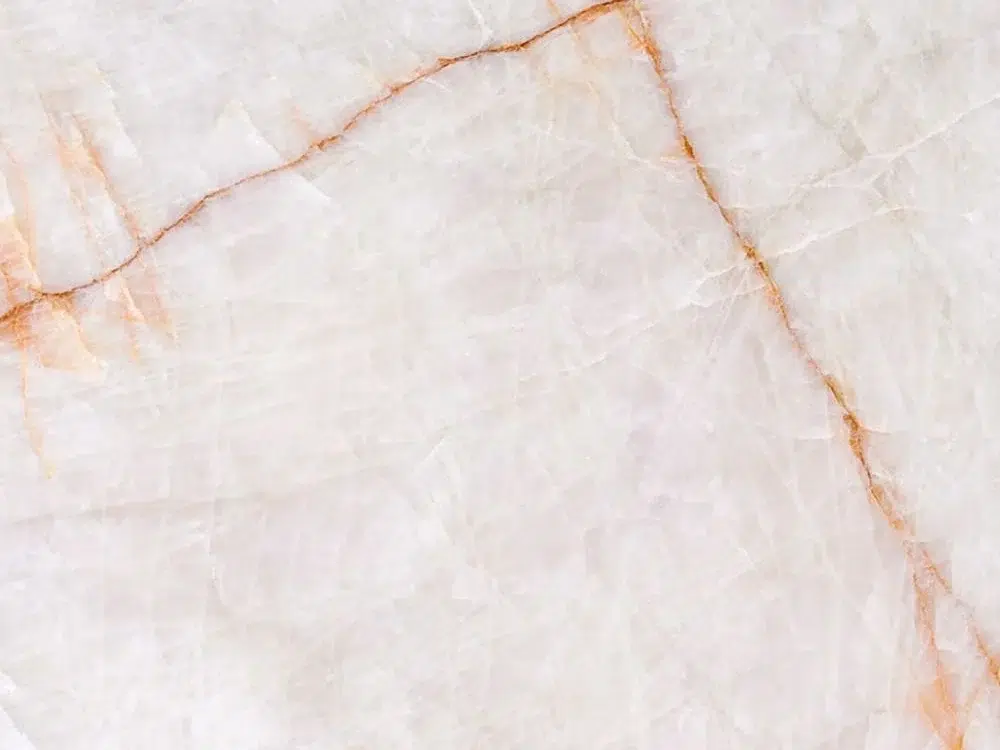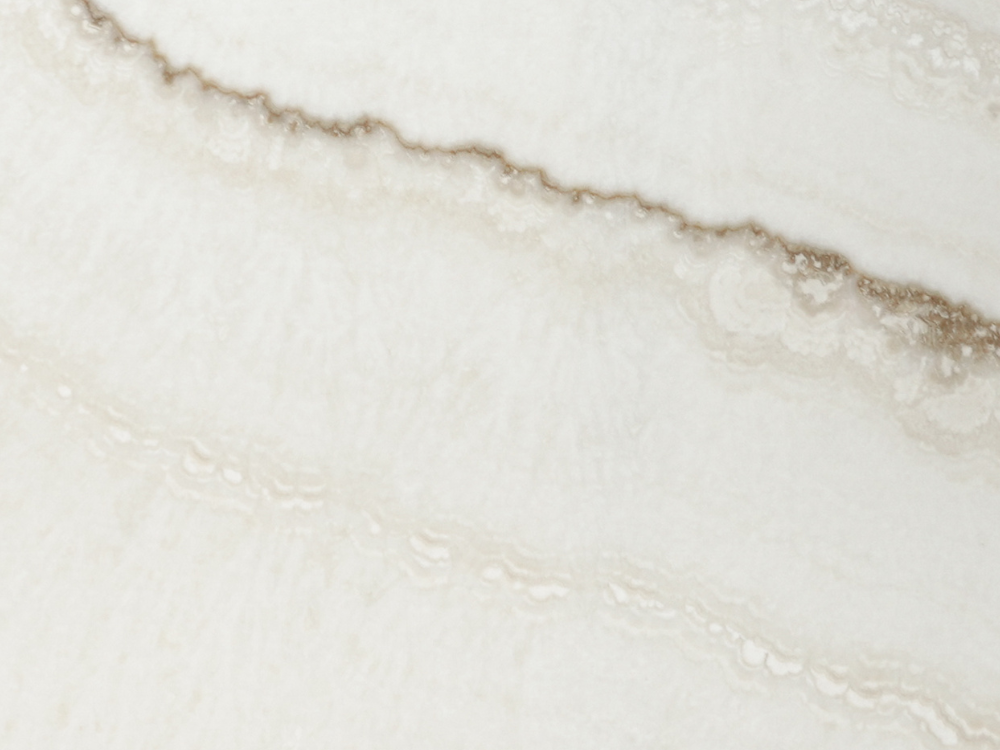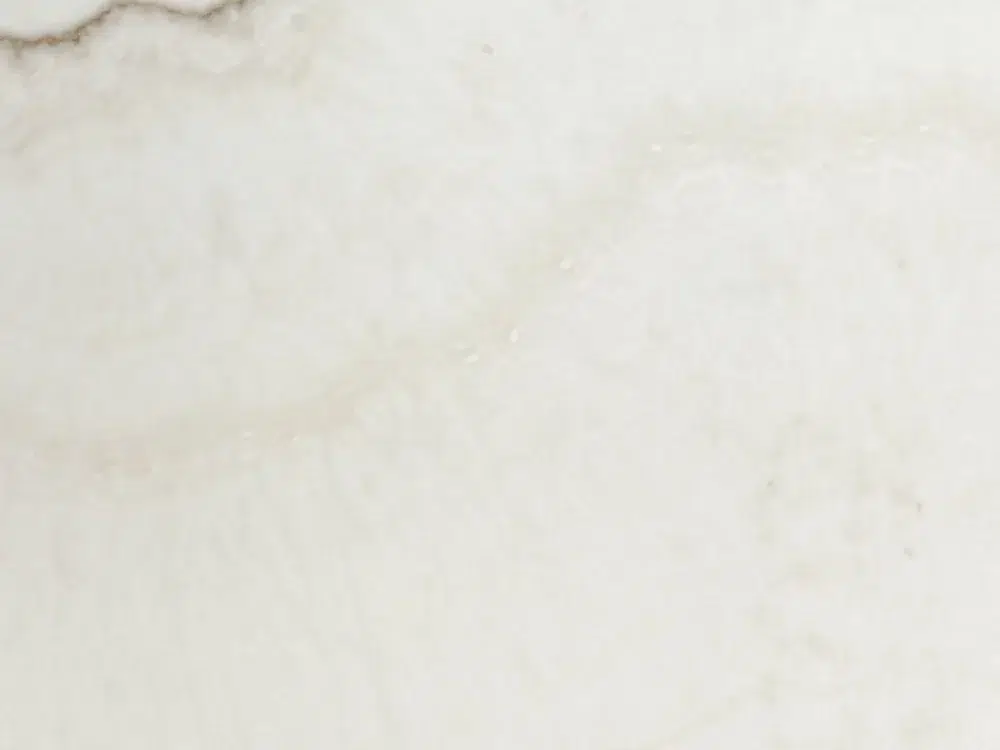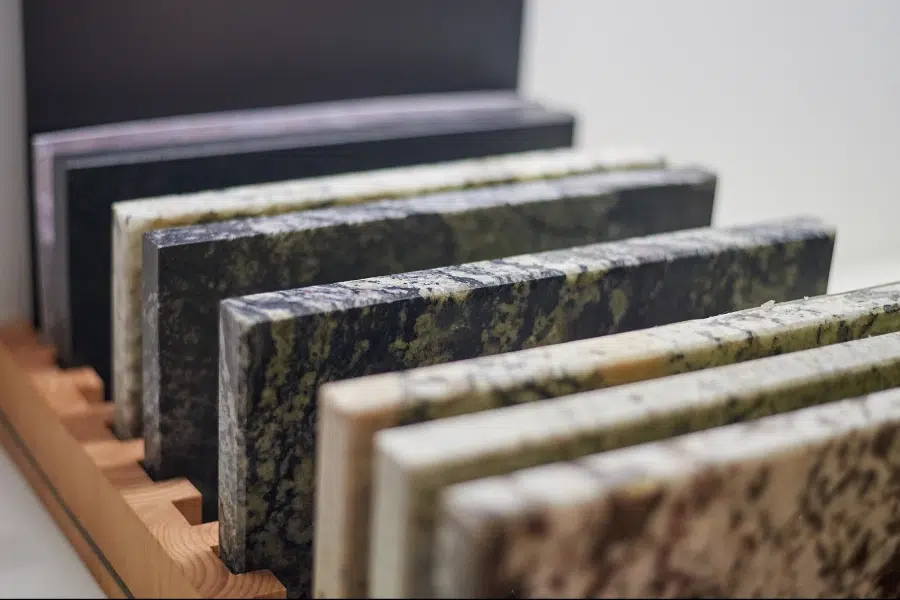The Pros & Cons of Marble Splashback
Every little thing counts when designing the kitchen since it serves as the social hub of the house. The Splashback is one of the essential components that may make or break the beauty of your kitchen. Marble Splashback has become one of the most popular choices for many homeowners among the numerous materials available. However, is it the best option for you? This in-depth study will examine the world of marble backsplash, contrasting it with other natural stones, and assessing its advantages and disadvantages. Therefore, grab your seat belts, and let’s explore the world of beauty, style, and utility that marble gives to your kitchen.
Our Marble Splashback For Benchtops
-
Verde Olympus Marble
Verde Olympus MarbleVerde Olympus features a deep intense dark green background, intersected by horizontal, diagonal and dramatic vertical veining. This Grecian beauty is perfect for those seeking a deep dark green colour with heavily contrasted angular veins .
-
Verde Oceania Marble
Verde Oceania MarbleVerde Oceania Marble captivates with a palette of green and grey hues set against an off-white backdrop, adorned with linear dark veining. Its crystalline structure allows light to glimmer upon its surface. This distinctive statement piece effortlessly brings the essence of natural elements into any design.
-
New York Marble
New York MarbleNew York Marble a name bestowed to this beautiful marble for its heavy movement and striking visuals. Characterized by its sharp dark purple veining against the white background with hues of pink and purple tones. New York Marble Slabs are for those looking to really make a statement, a fact aided by the translucence of this stone which makes it perfect for Backlighting. New York Marble transforms into a magical vista when backlit, making it ideal for feature walls, kitchens, and commercial applications alike.
-
Lloret Marble
Lloret MarbleLloret Marble is a symphony of charcoal, grey and white tones with heavy movement but a uniform structure. This wonderfully versatile marble is appealing both in residential setting but also in commercial setting due to its sophisticated yet appealing appearance. Due to its continuous movement of veins throughout this stone it can be used in myriad of different applications.
Our Marble Splashback For Benchtops
-
Verde Olympus Marble
Verde Olympus MarbleVerde Olympus features a deep intense dark green background, intersected by horizontal, diagonal and dramatic vertical veining. This Grecian beauty is perfect for those seeking a deep dark green colour with heavily contrasted angular veins .
-
Verde Oceania Marble
Verde Oceania MarbleVerde Oceania Marble captivates with a palette of green and grey hues set against an off-white backdrop, adorned with linear dark veining. Its crystalline structure allows light to glimmer upon its surface. This distinctive statement piece effortlessly brings the essence of natural elements into any design.
-
New York Marble
New York MarbleNew York Marble a name bestowed to this beautiful marble for its heavy movement and striking visuals. Characterized by its sharp dark purple veining against the white background with hues of pink and purple tones. New York Marble Slabs are for those looking to really make a statement, a fact aided by the translucence of this stone which makes it perfect for Backlighting. New York Marble transforms into a magical vista when backlit, making it ideal for feature walls, kitchens, and commercial applications alike.
-
Lloret Marble
Lloret MarbleLloret Marble is a symphony of charcoal, grey and white tones with heavy movement but a uniform structure. This wonderfully versatile marble is appealing both in residential setting but also in commercial setting due to its sophisticated yet appealing appearance. Due to its continuous movement of veins throughout this stone it can be used in myriad of different applications.
Our Marble Splashback Range
-
Silver Patagonia Quartzite
Silver Patagonia QuartzitePatagonia Silver Quartzite is a captivating natural stone defined by its crystalline structure and bold, expressive veining. A refined palette of silvers, soft greys, icy blues, and ivory whites creates a striking visual contrast, enhanced by areas of translucent mineralisation. With its dramatic composition and artistic movement, this quartzite is ideal for statement benchtops, feature walls, or high-end interior accents that demand attention.
-
Sierra Wave Granite
Sierra Wave GraniteSierra Wave Granite showcases a dynamic blend of silvery greys, charcoal tones, and soft creams, layered in sweeping, wave-like veining that flows elegantly across the slab. This natural movement creates depth and texture, making each piece truly one-of-a-kind. Flecks of white and hints of taupe add contrast and dimension, enhancing its visual appeal. Ideal for high-impact applications such as kitchen benchtops, feature walls, or bathroom vanities, Sierra Wave offers a bold yet refined statement in both contemporary and classic interiors.
-
Patagonia Retro Granite
Patagonia Retro GranitePatagonia Retro Granite showcases a stunning blend of warm beige, soft taupe, and cool grey tones, accentuated by bold white crystallisation. Its fractured patterns evoke the raw beauty of Patagonia’s landscapes, offering a unique and dramatic aesthetic. Renowned for its durability, this stone resists heat and scratches, making it a perfect fusion of strength and style – ideal for statement interiors that embrace natural elegance.
-
Iceborne Quartzite
Iceborne QuartziteIceborne Quartzite presents a refined aesthetic, characterised by a soft grey, cloud-like base and a distinctive, organic veining pattern. Subtle hints of copper, olive, and blue add depth to its sophisticated palette. Ideal for kitchen benchtops, bathroom vanities, and feature walls, Icebourne Quartzite delivers a timeless yet unique statement in high-end interior design.
-
Classic Beige Travertine
Classic Beige TravertineFeaturing subtle bands of warm ivory, cream, and honey tones, Classic Beige Travertine brings a sense of calm and cohesion to any space. Its honed and filled finish delivers a refined matte texture, perfect for creating understated luxury in both residential and commercial environments.
-
Azeroth Granite
Azeroth GraniteAzeroth Granite showcases a dramatic interplay of beige, soft greys, and deep charcoal mineral bursts across a richly textured surface. Its bold yet balanced palette makes it a striking choice for contemporary and transitional interiors alike. Ideal for kitchen benchtops, bathroom vanities, and feature walls, Azeroth delivers both visual impact and lasting durability. With its high resistance to heat and wear, this natural stone combines practicality with sophisticated design appeal.
-
Cristallo Rosa Quartzite
Cristallo Rosa QuartziteCristallo Rosa Quartzite embodies a harmonious blend of a delicate pink base with vibrant copper veining, offering a rich and dynamic aesthetic. The subtle crystalline texture combined with the bright copper accents infuses the space with warmth and sophistication. This striking natural stone provides an elegant focal point, perfect for creating luxurious surfaces in both modern and classic interiors.
-
White Onyx
White OnyxWhite Onyx is a premium luxury stone renowned for its refined elegance and timeless appeal. Characterised by a luminous white base with soft beige undertones, this exquisite material brings a sense of warmth and depth to any space. Subtle, flowing veining enhances its ethereal, cloud-like appearance, making it an ideal choice for benchtops, feature walls and vanities, the perfect choice for high-end interiors seeking to make a bold yet graceful design statement.
Our Marble Splashback Range
-
Silver Patagonia Quartzite
Silver Patagonia QuartzitePatagonia Silver Quartzite is a captivating natural stone defined by its crystalline structure and bold, expressive veining. A refined palette of silvers, soft greys, icy blues, and ivory whites creates a striking visual contrast, enhanced by areas of translucent mineralisation. With its dramatic composition and artistic movement, this quartzite is ideal for statement benchtops, feature walls, or high-end interior accents that demand attention.
-
Sierra Wave Granite
Sierra Wave GraniteSierra Wave Granite showcases a dynamic blend of silvery greys, charcoal tones, and soft creams, layered in sweeping, wave-like veining that flows elegantly across the slab. This natural movement creates depth and texture, making each piece truly one-of-a-kind. Flecks of white and hints of taupe add contrast and dimension, enhancing its visual appeal. Ideal for high-impact applications such as kitchen benchtops, feature walls, or bathroom vanities, Sierra Wave offers a bold yet refined statement in both contemporary and classic interiors.
-
Patagonia Retro Granite
Patagonia Retro GranitePatagonia Retro Granite showcases a stunning blend of warm beige, soft taupe, and cool grey tones, accentuated by bold white crystallisation. Its fractured patterns evoke the raw beauty of Patagonia’s landscapes, offering a unique and dramatic aesthetic. Renowned for its durability, this stone resists heat and scratches, making it a perfect fusion of strength and style – ideal for statement interiors that embrace natural elegance.
-
Iceborne Quartzite
Iceborne QuartziteIceborne Quartzite presents a refined aesthetic, characterised by a soft grey, cloud-like base and a distinctive, organic veining pattern. Subtle hints of copper, olive, and blue add depth to its sophisticated palette. Ideal for kitchen benchtops, bathroom vanities, and feature walls, Icebourne Quartzite delivers a timeless yet unique statement in high-end interior design.
-
Classic Beige Travertine
Classic Beige TravertineFeaturing subtle bands of warm ivory, cream, and honey tones, Classic Beige Travertine brings a sense of calm and cohesion to any space. Its honed and filled finish delivers a refined matte texture, perfect for creating understated luxury in both residential and commercial environments.
-
Azeroth Granite
Azeroth GraniteAzeroth Granite showcases a dramatic interplay of beige, soft greys, and deep charcoal mineral bursts across a richly textured surface. Its bold yet balanced palette makes it a striking choice for contemporary and transitional interiors alike. Ideal for kitchen benchtops, bathroom vanities, and feature walls, Azeroth delivers both visual impact and lasting durability. With its high resistance to heat and wear, this natural stone combines practicality with sophisticated design appeal.
-
Cristallo Rosa Quartzite
Cristallo Rosa QuartziteCristallo Rosa Quartzite embodies a harmonious blend of a delicate pink base with vibrant copper veining, offering a rich and dynamic aesthetic. The subtle crystalline texture combined with the bright copper accents infuses the space with warmth and sophistication. This striking natural stone provides an elegant focal point, perfect for creating luxurious surfaces in both modern and classic interiors.
-
White Onyx
White OnyxWhite Onyx is a premium luxury stone renowned for its refined elegance and timeless appeal. Characterised by a luminous white base with soft beige undertones, this exquisite material brings a sense of warmth and depth to any space. Subtle, flowing veining enhances its ethereal, cloud-like appearance, making it an ideal choice for benchtops, feature walls and vanities, the perfect choice for high-end interiors seeking to make a bold yet graceful design statement.
Before selecting a marble splashback, it’s crucial to consider several aspects that could significantly impact your kitchen’s functionality and style:
- Aesthetic Compatibility: Marble, with its unique veined patterns and rich textures, offers significant visual appeal. However, it’s essential to ensure that the marble splashback you choose complements your kitchen’s overall theme. The natural elegance of marble should align with your interior design to create a cohesive look.
- Budget Constraints: High-quality marble can be expensive. When choosing a marble splashback, it’s important to consider not only the initial purchase cost but also long-term maintenance expenses. Budgeting effectively will help you manage costs without compromising on quality or aesthetics.
- Maintenance and Care: Marble’s beauty comes with a need for regular maintenance. Its porous nature makes it prone to staining and etching, requiring regular sealing and careful cleaning. If high maintenance is a concern, you might want to explore more low-maintenance materials that still offer a similar aesthetic appeal.
- Durability and Resistance: Marble is heat-resistant, making it an excellent choice for areas around stoves. However, it can be prone to chipping or cracking upon impact. Consider the installation area and expected wear to ensure that marble is a practical choice for your splashback.
- Environmental Considerations: The extraction and processing of marble can have significant environmental impacts. If sustainability is a key concern for you, it’s worth researching the sourcing practices of suppliers and considering materials with lower environmental footprints.
Choosing a marble splashback involves balancing aesthetic desires with practical considerations such as budget, maintenance, durability, and environmental impact. By carefully evaluating these factors, you can select a splashback that enhances your kitchen’s beauty while fitting your lifestyle and values.
When deciding on the best material for your kitchen splashback, it’s important to weigh the characteristics of marble against other popular natural stone options. Each stone has its unique attributes, advantages, and considerations.
- Granite: Known for its robustness, granite offers a vast spectrum of colours and patterns, providing a highly durable and low-maintenance option for splashbacks. Unlike marble, granite doesn’t easily scratch or etch, making it suitable for high-traffic kitchens.
- Quartzite: Quartzite is appreciated for its hardness and resistance to heat and scratches, characteristics that are superior to marble’s. It showcases a stunning blend of colours and patterns that can rival marble’s aesthetic. Quartzite’s durability makes it an excellent choice for splashbacks, though it lacks marble’s unique veining and classic appeal.
- Limestone: Limestone provides a softer, more earthy appearance compared to marble. It offers a warm and inviting look but is more porous and susceptible to staining and scratching. Limestone requires regular sealing and careful maintenance to preserve its beauty over time.
- Travertine: With its distinctive, timeless charm, travertine is another option for those who appreciate natural beauty. Like limestone, travertine is more porous than marble and may require frequent sealing to protect against stains and etching.
By comparing these options, it becomes clear that choosing the perfect material for your backsplash is a subjective decision. Understanding the characteristics of each stone will help you make an informed choice, whether you opt for the timeless beauty of marble or the charm of limestone.

Find the Perfect Stone for
Your Project
Pros of Marble Splashback
The allure of a marble backsplash is undeniable. It has been a favourite among homeowners and designers alike due to its natural beauty, unique patterns, and luxurious appearance. But what makes marble such a great material for a Splashback? Let’s explore the advantages of using marble in your kitchen, including its beauty, versatility, and more.
Aesthetic Appeal
Water and Heat Resistance
Investment Value
Durability
With proper care, marble is a strong and long-lasting material. It is a great choice for areas near stovetops and ovens due to its heat resistance.
Uniqueness
When you choose a marble Splashback, you are creating a work of art for your kitchen. Each slab is unique, adding to the individuality of your design and allowing you to express your style.
Cons of Marble Splashback
Maintenance
Cost
Vulnerability to Damage
Variation in Color
The unique patterns and hues of marble add to its allure, but they can also result in variations in appearance. It can be challenging to coordinate slabs for a cohesive look.
Environmental Impact
Conclusion
Choosing the perfect backsplash for your kitchen goes beyond mere decoration. It involves creating a space that reflects your taste, meets your functional needs, and adds value to your home. A marble backsplash can enhance any kitchen design with its combination of elegance, individuality, and luxury. However, it does come with its own challenges.
Understanding the benefits and drawbacks of a marble backsplash is crucial in making an informed decision, from the timeless beauty and versatility of the material to its cost and maintenance requirements. Your choice will shape the heart of your home for years to come, whether you are drawn to the aesthetic appeal of marble or prefer the rustic beauty of other natural stones.
Ultimately, your personal preferences, lifestyle, and budget should guide your decision to choose marble or another material for your backsplash. Consult with design experts, explore different ideas, and trust your instincts. After all, your kitchen is a reflection of who you are, and the perfect stone splashback can complete the look.
Frequently Asked Questions (FAQs)
What are the main advantages of choosing a marble splashback for my kitchen?
Marble splashbacks offer a timeless elegance and unique beauty, with each piece being distinct. They can also add value to your home due to their luxurious appeal. Additionally, marble is naturally heat resistant, making it suitable for kitchen environments.
Are there any drawbacks to using marble as a splashback material?
How does the cost of a marble splashback compare to other materials?
Can marble splashbacks withstand high heat and humidity in the kitchen?
How often does a marble splashback need to be sealed?
Is a marble splashback a good choice for all kitchen styles?
How do I clean and maintain my marble splashback to keep it looking new?
Natural Stone Slab Supplier
Avant Stone brings together 20 years of stone industry experience to provide you with a range of globally sourced stone slabs including Marble slabs, Granite slabs and Quartzite Slabs.
We aim provide you quality service and distinctive stone products for your home or your commercial space. Avant Stone is the premier Stone Supplier of Granite, Quartzite and Marble slabs in Sydney.
Our showroom is located centrally in Greenacre, a mere 20 minutes from Sydney & Parramatta CBD.
Give us a call: 0298170037
Email us at: info@avantstone.com.au











